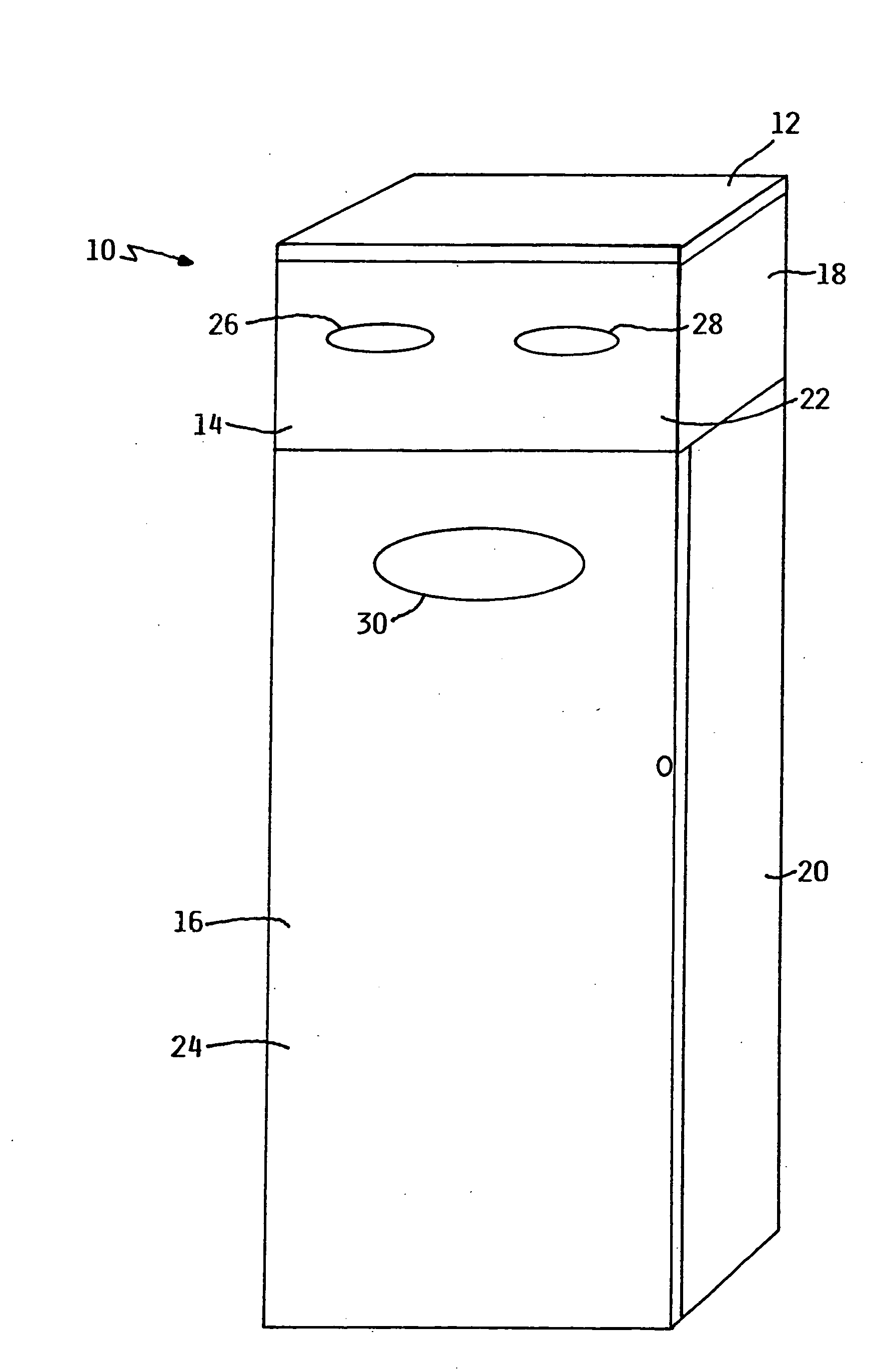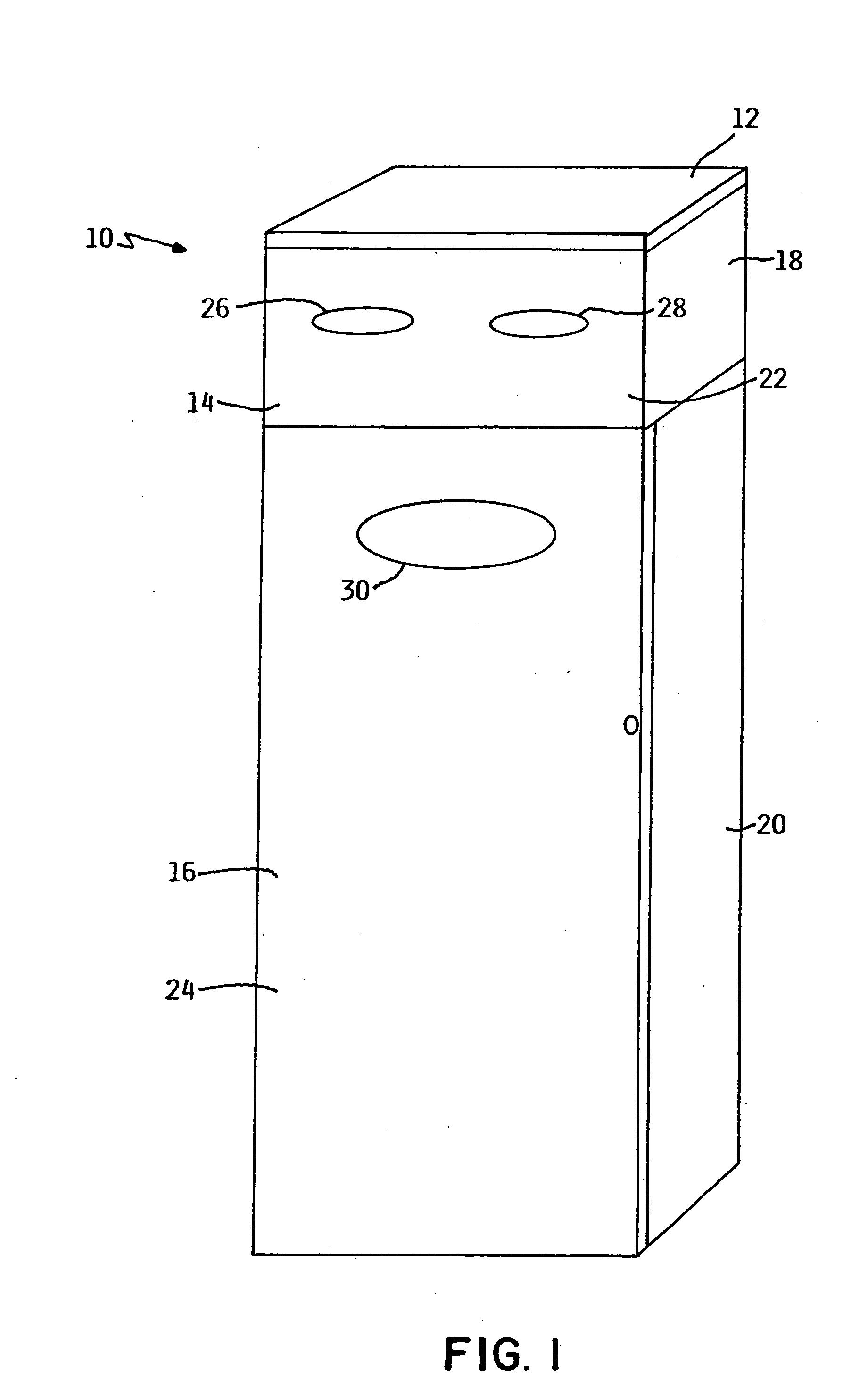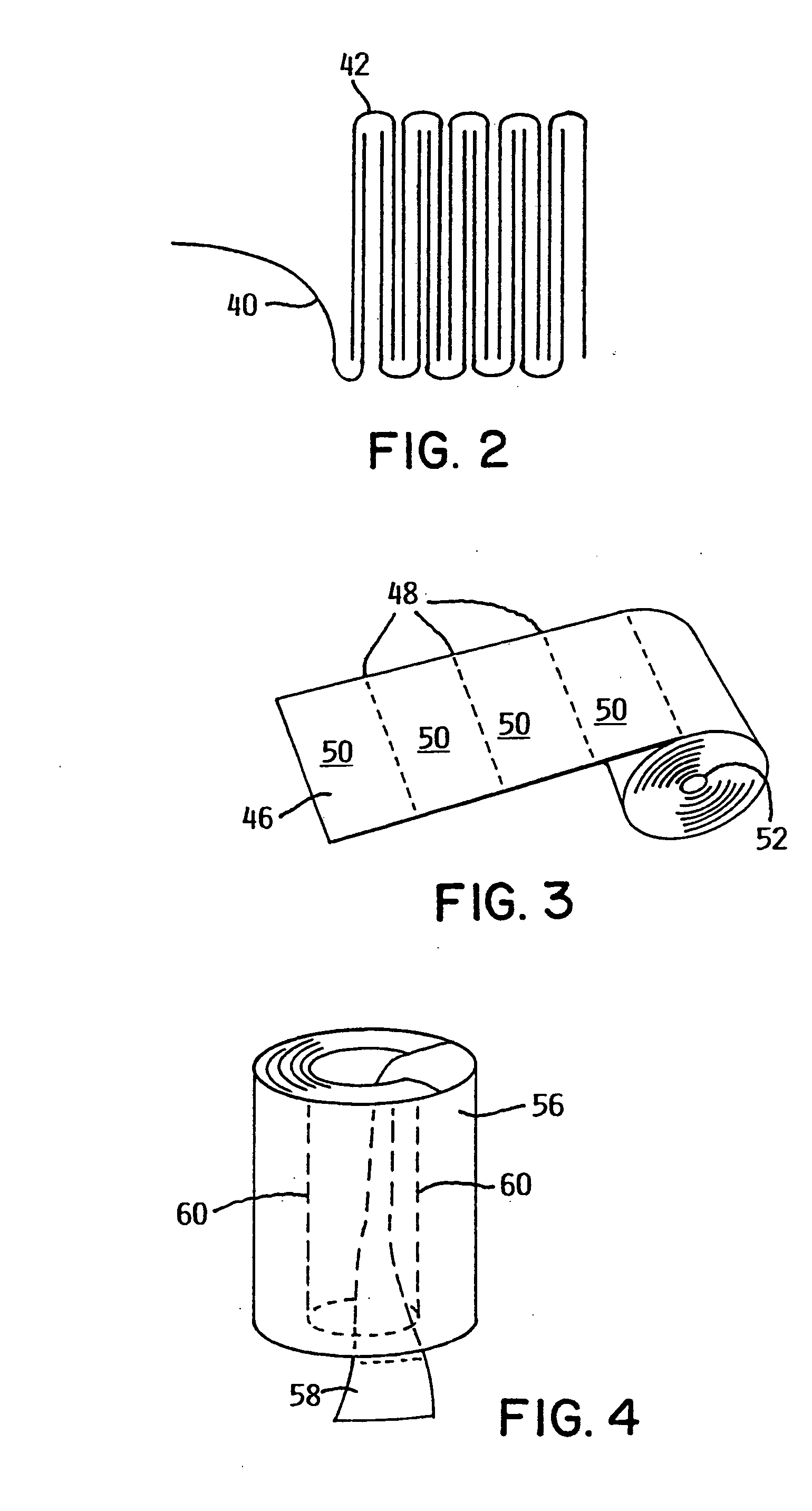Publicly-accessible moist hand cleaning wipe station
a wet wipe station and public access technology, applied in the field of hands sanitization, can solve the problems of reducing the service life of workers, requiring medical treatment, and affecting the quality of life of workers, so as to reduce the flow of ambient air, quick and convenient dispense, and keep the wet wipes clean
- Summary
- Abstract
- Description
- Claims
- Application Information
AI Technical Summary
Benefits of technology
Problems solved by technology
Method used
Image
Examples
Embodiment Construction
[0052]An integrated, self-contained hand sanitizer station for a public area is provided by the invention containing a wet wipe dispenser and a trash receptacle within an enclosure. The wet wipe towelette may be quickly grabbed and used to clean the hands, followed by disposal in the trash receptacle. By making good hand hygiene quick and convenient through the use of the hand sanitizer station, bacteria, viruses, and other germs that are prevalent in public areas may be eliminated from the hands that can otherwise cause illness to the person or be transferred to other persons.
[0053]FIG. 1 shows one embodiment of the hand sanitizer station 10 of the present invention. It contains a top wall 12, front upper wall 14, front lower wall 16, side upper wall 18, side lower wall 20, and corresponding walls on the other side and back. In this manner, the side walls cooperate with the top wall to form upper interior zone 22 and lower interior zone 24. Located on front upper panel 14 are two o...
PUM
 Login to View More
Login to View More Abstract
Description
Claims
Application Information
 Login to View More
Login to View More - R&D
- Intellectual Property
- Life Sciences
- Materials
- Tech Scout
- Unparalleled Data Quality
- Higher Quality Content
- 60% Fewer Hallucinations
Browse by: Latest US Patents, China's latest patents, Technical Efficacy Thesaurus, Application Domain, Technology Topic, Popular Technical Reports.
© 2025 PatSnap. All rights reserved.Legal|Privacy policy|Modern Slavery Act Transparency Statement|Sitemap|About US| Contact US: help@patsnap.com



